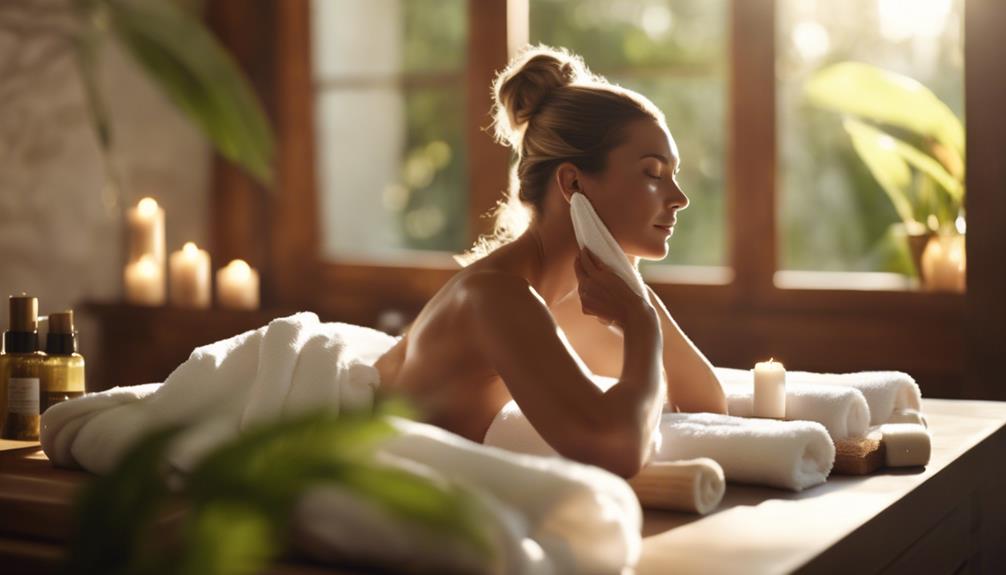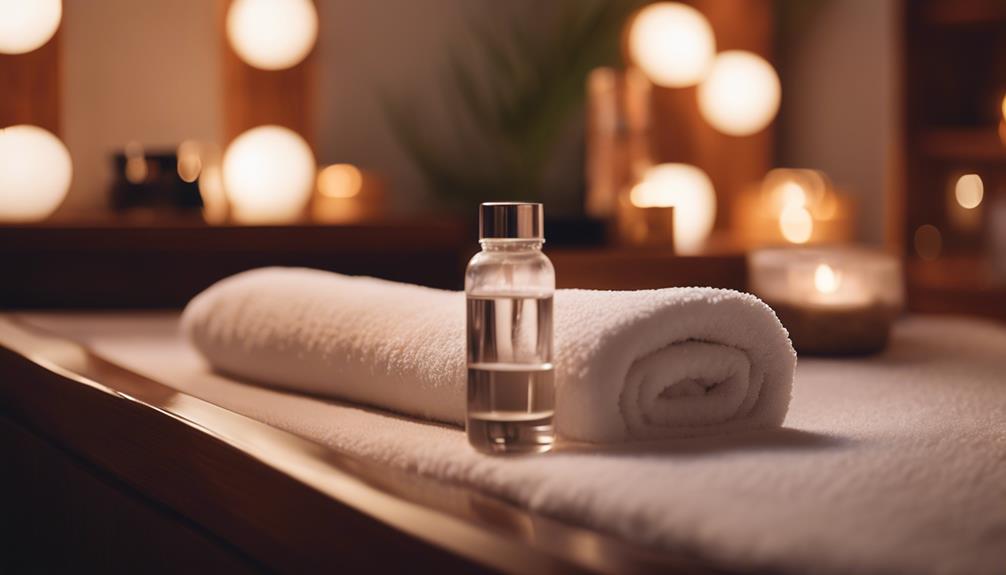A tanned skin doesn’t mean you’re healthier; in fact, it’s a sign your skin has been injured by ultraviolet radiation. Whether from the sun or indoor tanning beds, this damage triggers your skin to produce more melanin, creating that darker appearance. But it’s still an injury, not a mark of good health. To protect your skin and learn safer ways to achieve a healthy glow, keep exploring the facts behind tanning and skin care.
Key Takeaways
- A tan indicates skin injury from UV exposure, not good health.
- UV rays damage skin cells and increase skin cancer risk.
- Tanning is a response to skin injury, signaling harm.
- Sun protection and safe alternatives preserve skin health.
- A healthy glow can be achieved without risking skin damage.

Many people seek a tanned complexion to achieve a healthy, sun-kissed look, but it’s important to understand how tanning affects your health. Tanning, whether from indoor tanning beds or natural sun exposure, might seem like an easy way to look vibrant. However, both methods come with significant risks that can outweigh the aesthetic benefits. Indoor tanning, in particular, has become popular because it offers a controlled environment to get that bronze glow. Yet, it exposes your skin to concentrated ultraviolet (UV) radiation, which increases your chance of skin damage and skin cancer. UV rays from tanning beds can be more intense than natural sunlight, making the risk even higher. Many people mistakenly think that indoor tanning is a safer alternative to sunbathing, but the truth is, it’s just as harmful—if not more so—because the exposure is often prolonged and concentrated.
Natural sun exposure might seem less risky because it’s part of the natural day-night cycle, but it still exposes your skin to harmful UV radiation. When you spend extended periods in the sun without protection, your skin can become damaged, leading to premature aging, such as wrinkles and age spots, and increasing your risk of skin cancer. Even short, frequent sun exposures can add up over time. The key is moderation; if you want a tan, it’s better to limit your time in the sun and always use broad-spectrum sunscreen. Remember, a tan is actually a sign of skin injury. Your skin produces more melanin—the pigment responsible for tanning—as a defense mechanism against UV damage, so a darker hue signals that your skin has been harmed.
Additionally, advances in nanotechnology are leading to safer alternatives like UV-free tanning products, which can provide a more uniform and controlled appearance without the risks associated with UV exposure. It’s tempting to think that a tan makes you look healthier, but the health risks tell a different story. A natural tan or an indoor tan does not represent good health; instead, it shows your skin has been injured. If you’re after a healthy glow, consider alternatives like self-tanning products, which can give you the appearance of a tan without the UV exposure. These options are safer and don’t increase your risk of skin cancer. Protecting your skin from UV damage is essential for long-term health. It’s better to focus on skin health than to chase an aesthetic that could compromise it. So, while a tanned skin might seem attractive, remember that it’s often a sign of damage, not good health. Your skin’s health depends on protecting it from harmful UV rays, regardless of whether you’re outdoors or indoors.
Frequently Asked Questions
Can Tanning Improve Vitamin D Levels Safely?
Yes, moderate sun exposure can improve your Vitamin D levels safely. When you spend time outdoors, your skin produces Vitamin D naturally in response to sunlight. To do this safely, limit your sun exposure to about 10-30 minutes a day, depending on your skin type and location. Remember, overdoing it can increase skin damage risk. Balancing sun exposure helps boost Vitamin D without risking harm.
Does Natural Sun Tanning Differ From Artificial Tanning?
Natural sun tanning differs from artificial tanning mainly in how your skin responds and the level of sun protection needed. When you tan naturally, your skin’s pigmentation increases as a response to UV exposure, which can damage your skin if not protected. Artificial tanning, like sprays or beds, avoids UV rays but still affects your skin’s pigmentation. Always use sun protection and be cautious to prevent skin damage regardless of the tanning method.
How Does Tanning Affect Skin Aging Over Time?
Tanning accelerates skin aging by breaking down collagen and reducing skin elasticity. When you tan, UV rays damage your skin’s fibers, leading to wrinkles, fine lines, and sagging over time. You might look tanned and youthful initially, but long-term exposure weakens your skin’s structure. Protect your skin by limiting sun exposure and using sunscreen, helping maintain its firmness and youthful appearance for years to come.
Are There Specific Skin Types More Prone to Damage?
Certain skin types are more prone to damage due to genetic predisposition and skin sensitivity. If you have fair or light skin, you’re more vulnerable to UV damage and sunburns, which increase aging risks. People with darker skin have more melanin, offering some protection but still need sun safety. Knowing your skin type helps you take appropriate precautions, like using sunscreen and limiting sun exposure, to prevent damage and maintain healthier skin.
What Are the Long-Term Health Risks of Frequent Tanning?
Frequent tanning increases your risk of skin cancer and sunburns, both serious health concerns. When you tan often, UV exposure damages your skin cells, raising your chances of melanoma and other skin cancers. Plus, repeated sunburns weaken your skin’s defenses, accelerating aging and heightening the risk of long-term damage. Protect your skin by avoiding excessive tanning and always applying broad-spectrum sunscreen when outdoors.
Conclusion
Remember, a tan might look like a badge of health, but it’s more like a warning flag fluttering in the wind. Just because your skin glows doesn’t mean your body’s in the clear. Think of your skin as a mirror; what it reflects isn’t just surface beauty but your inner health. So, don’t chase the illusion of a perfect tan—prioritize protecting your skin and listening to what your body truly needs.









